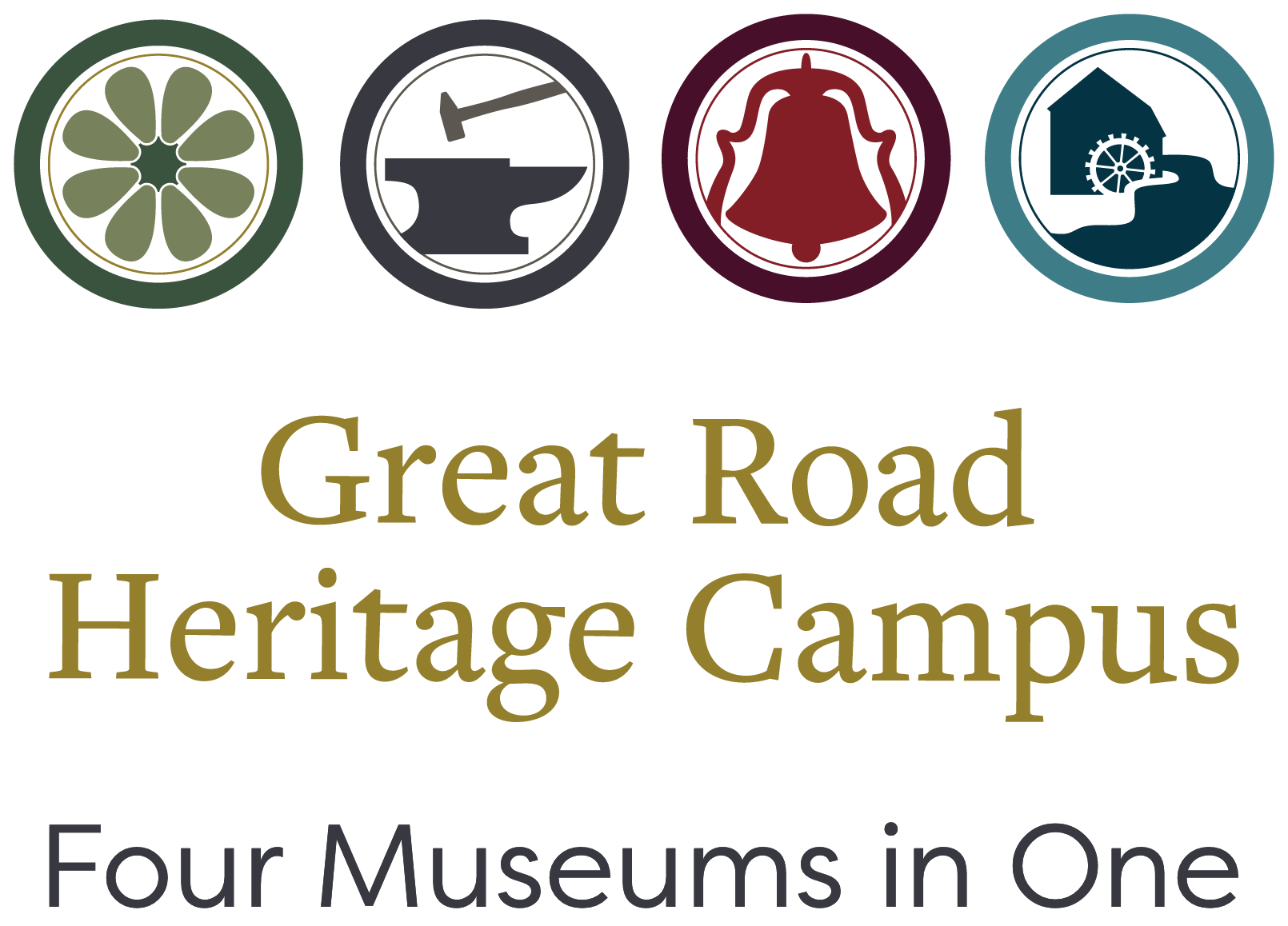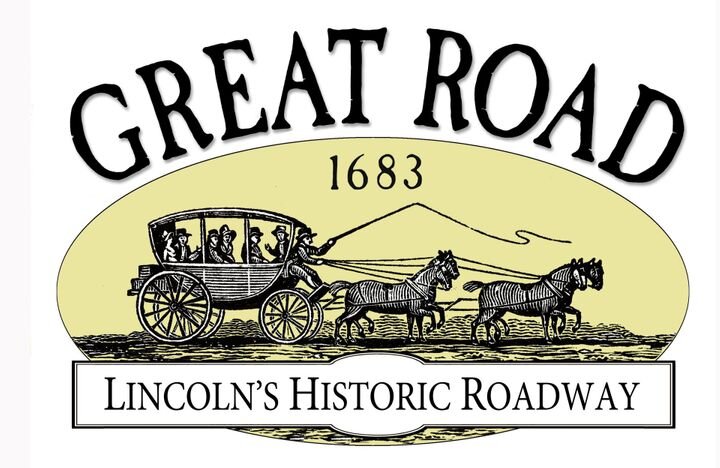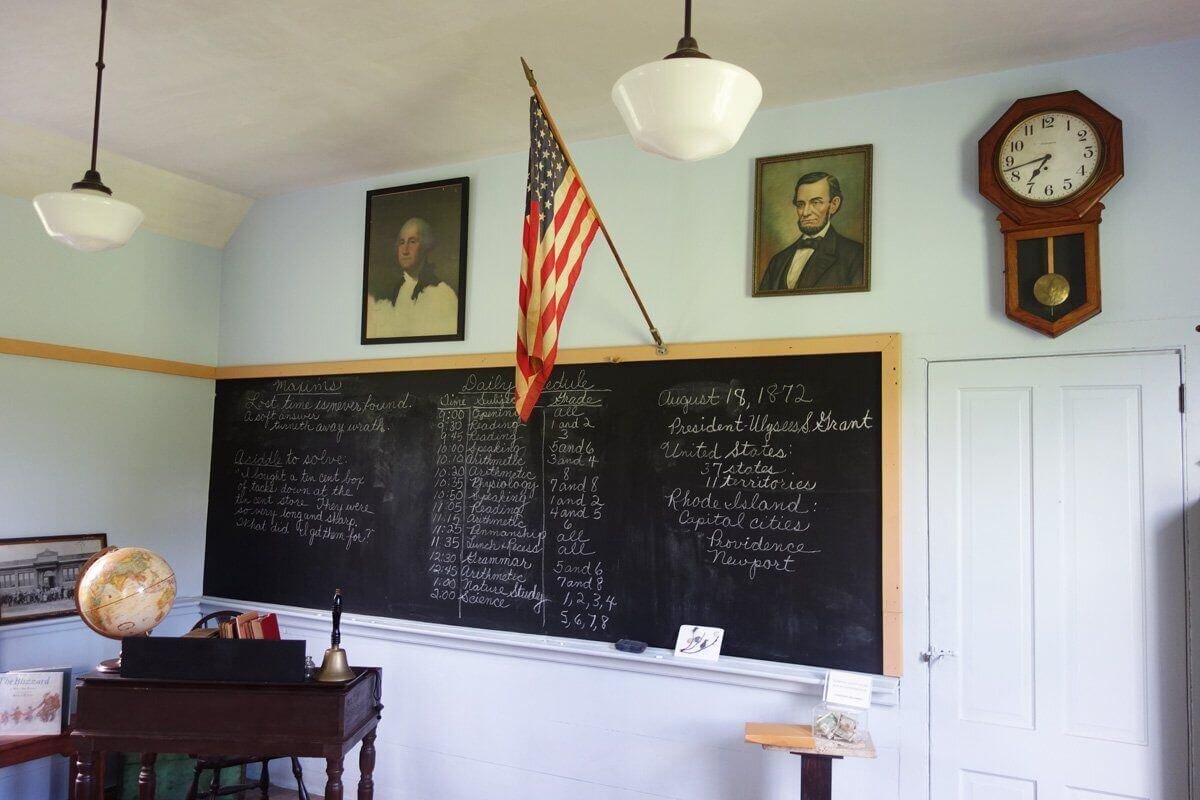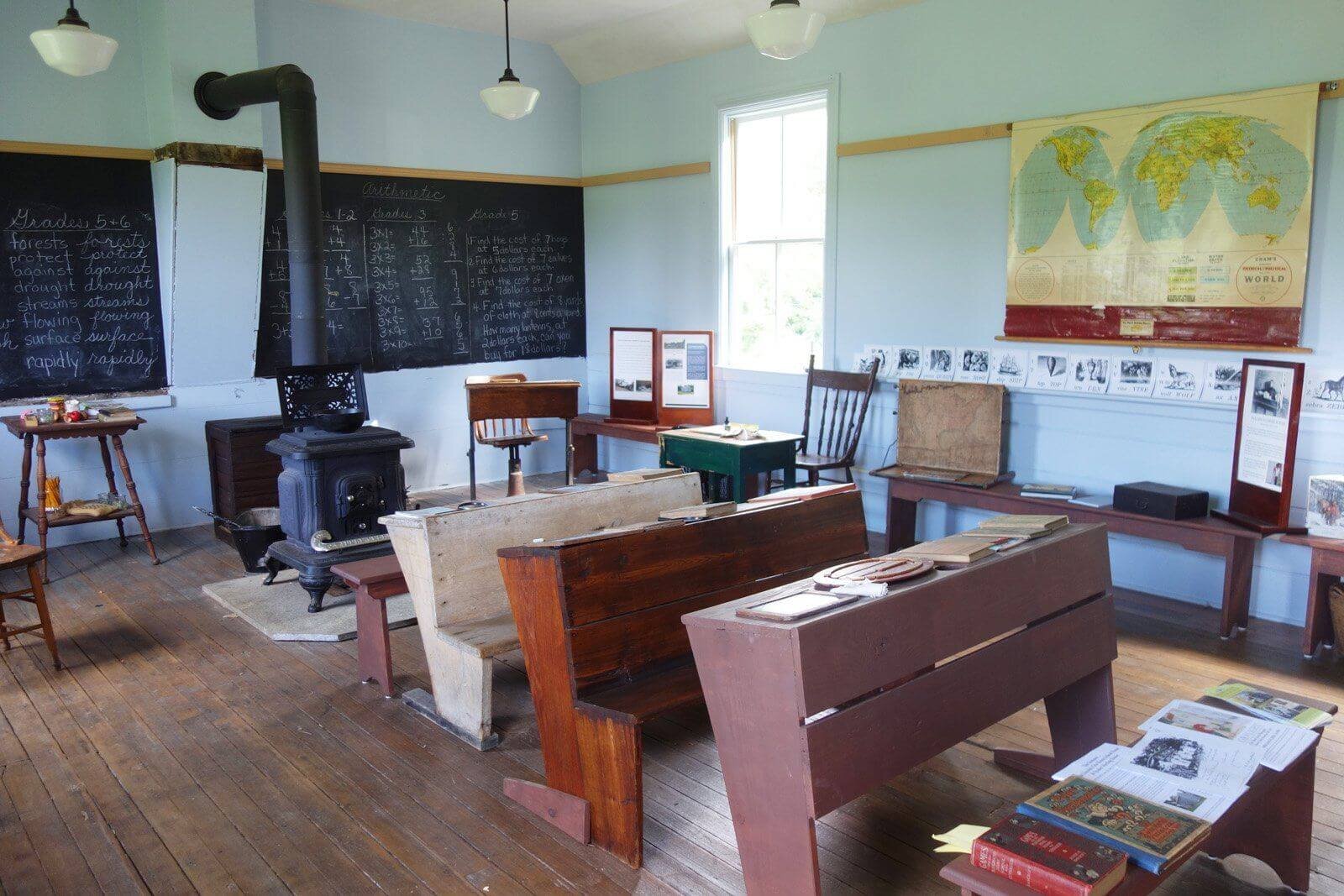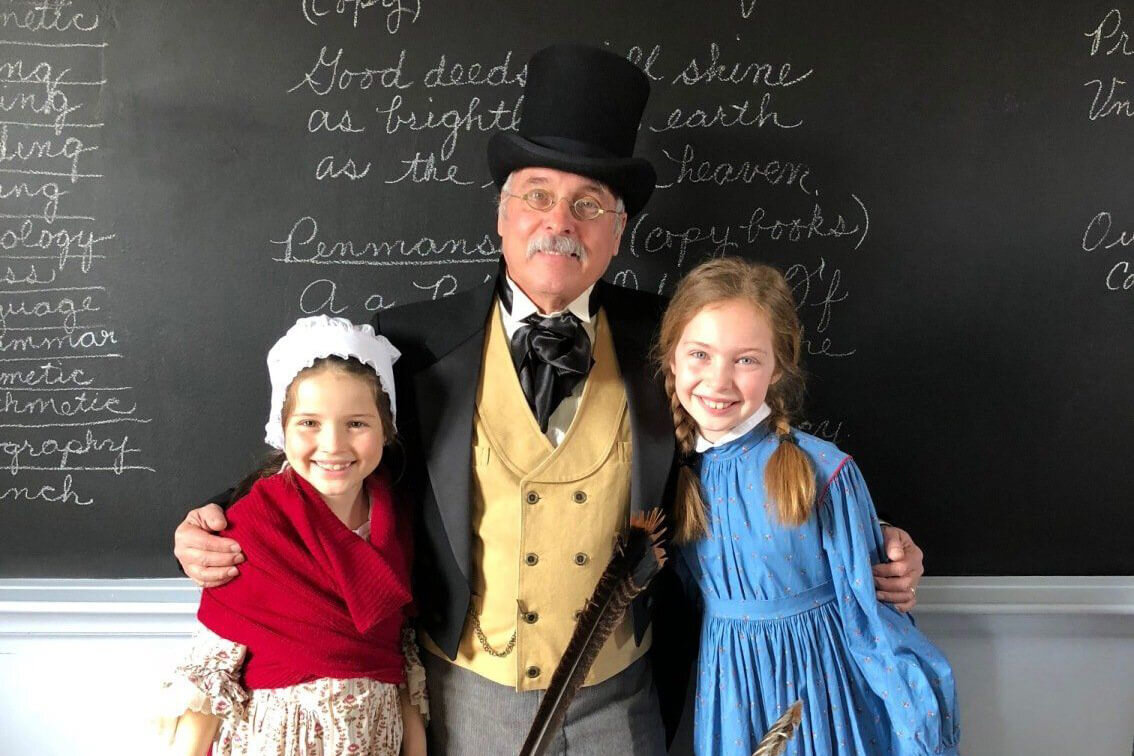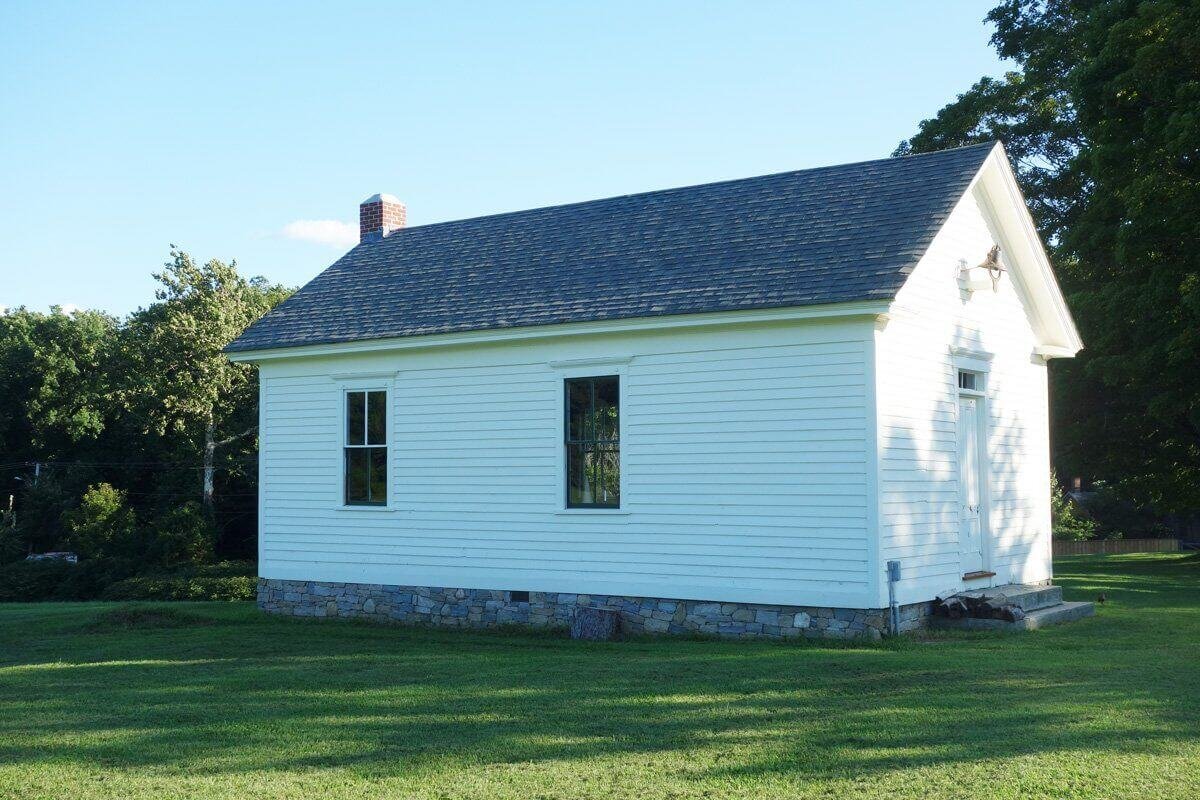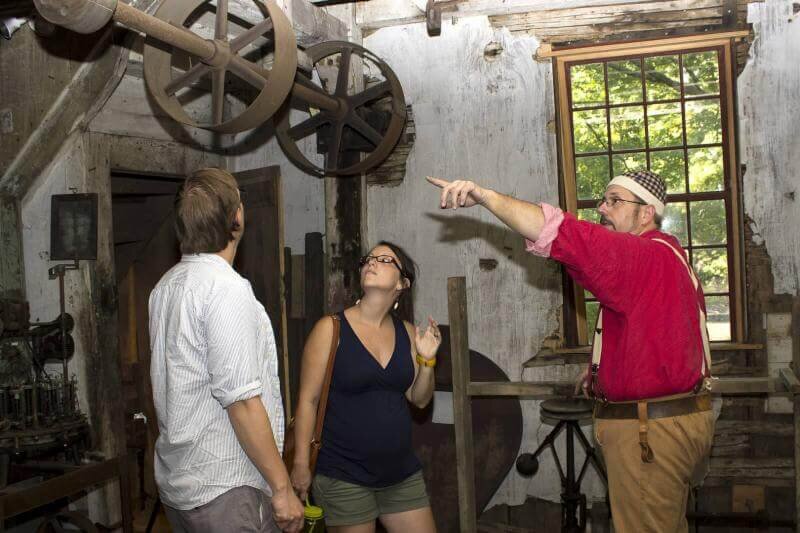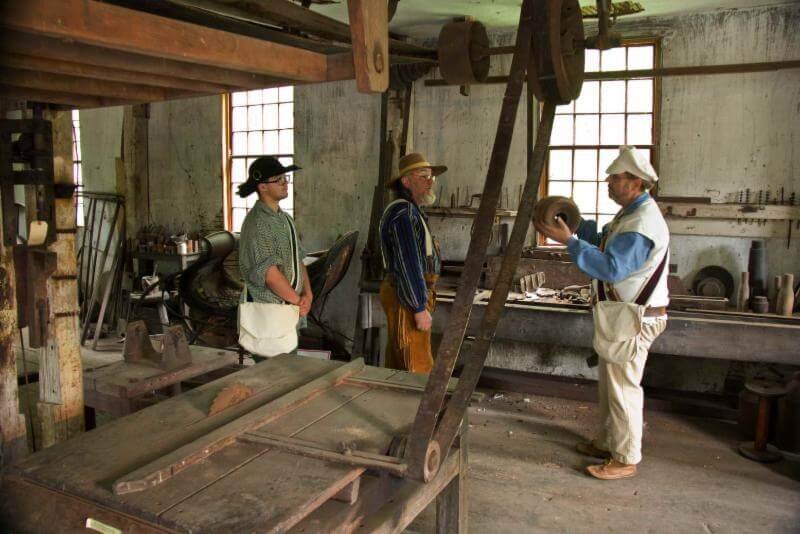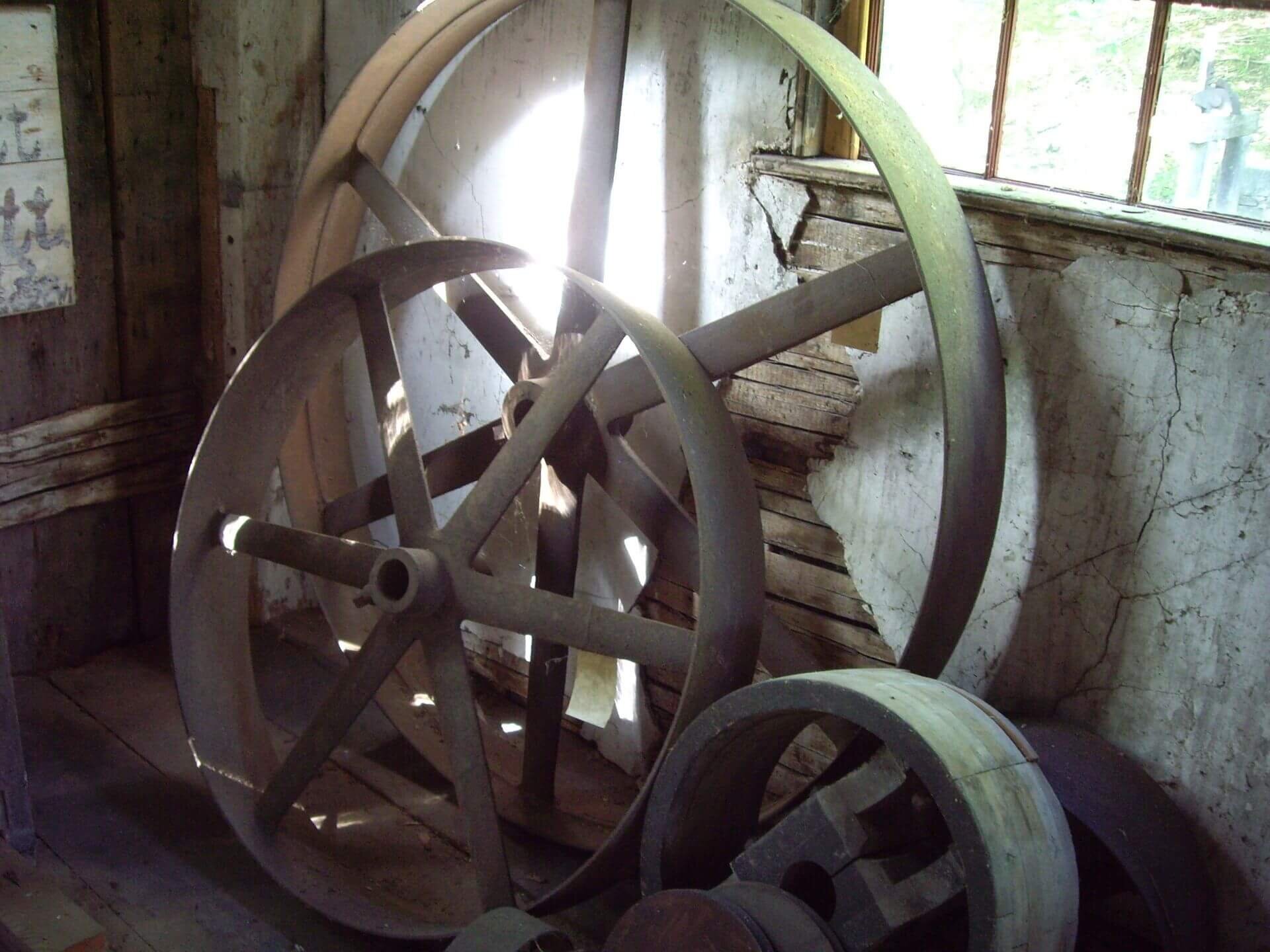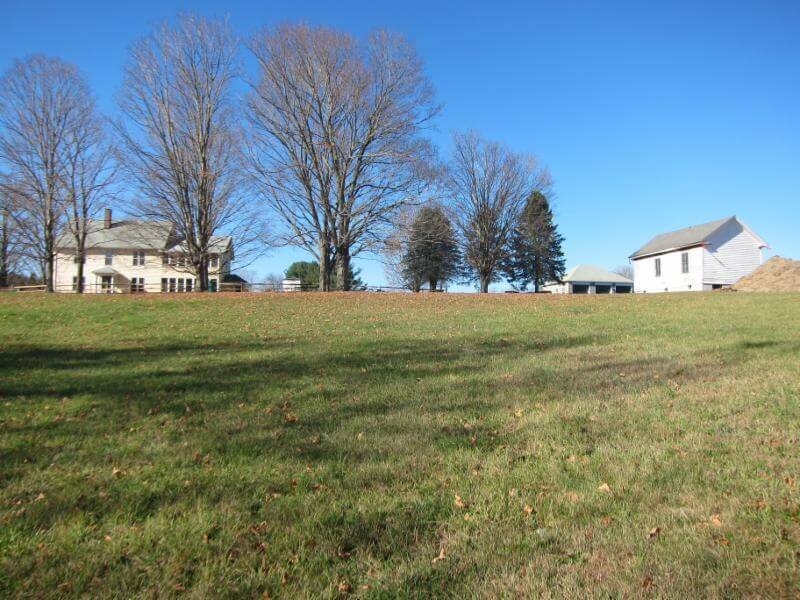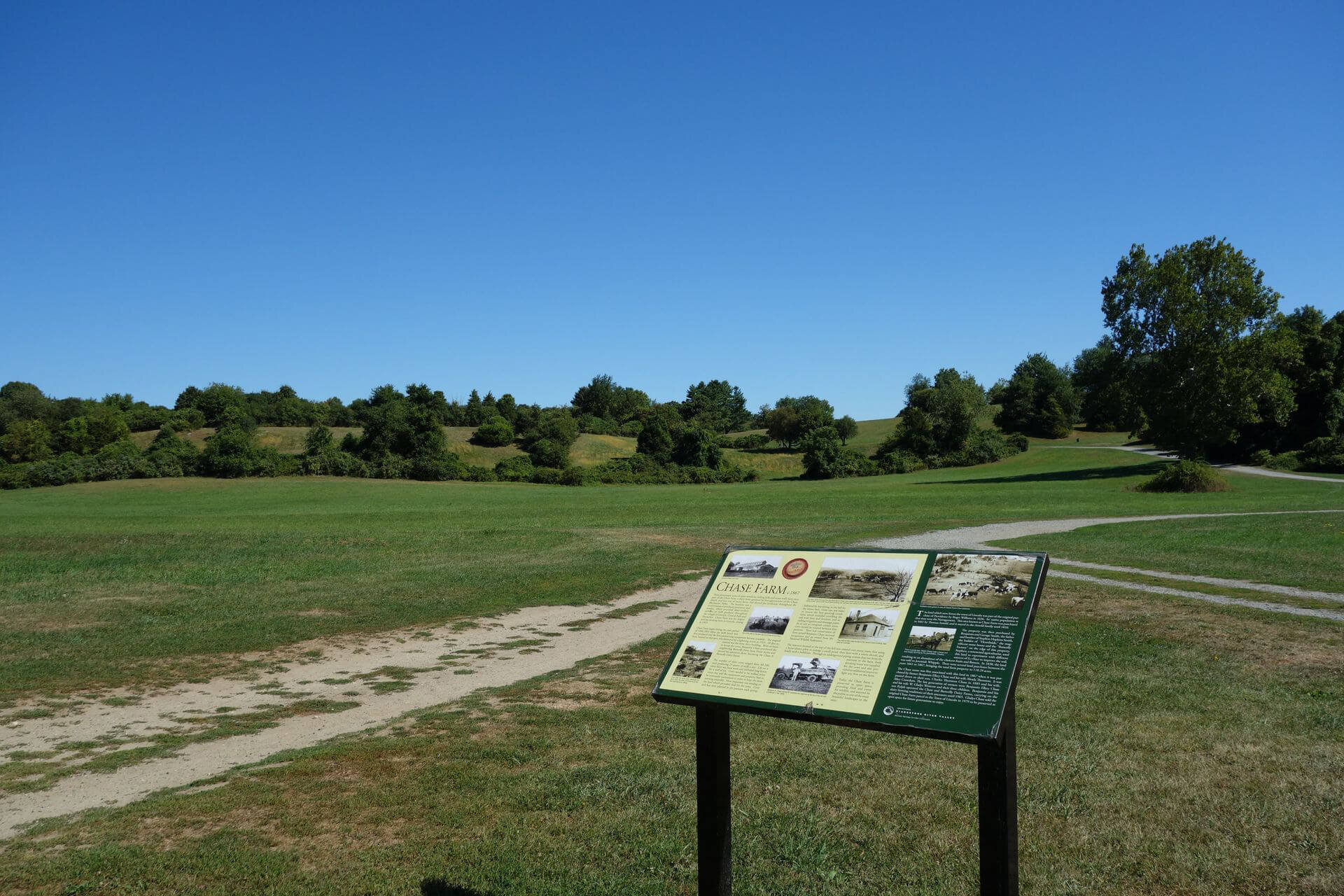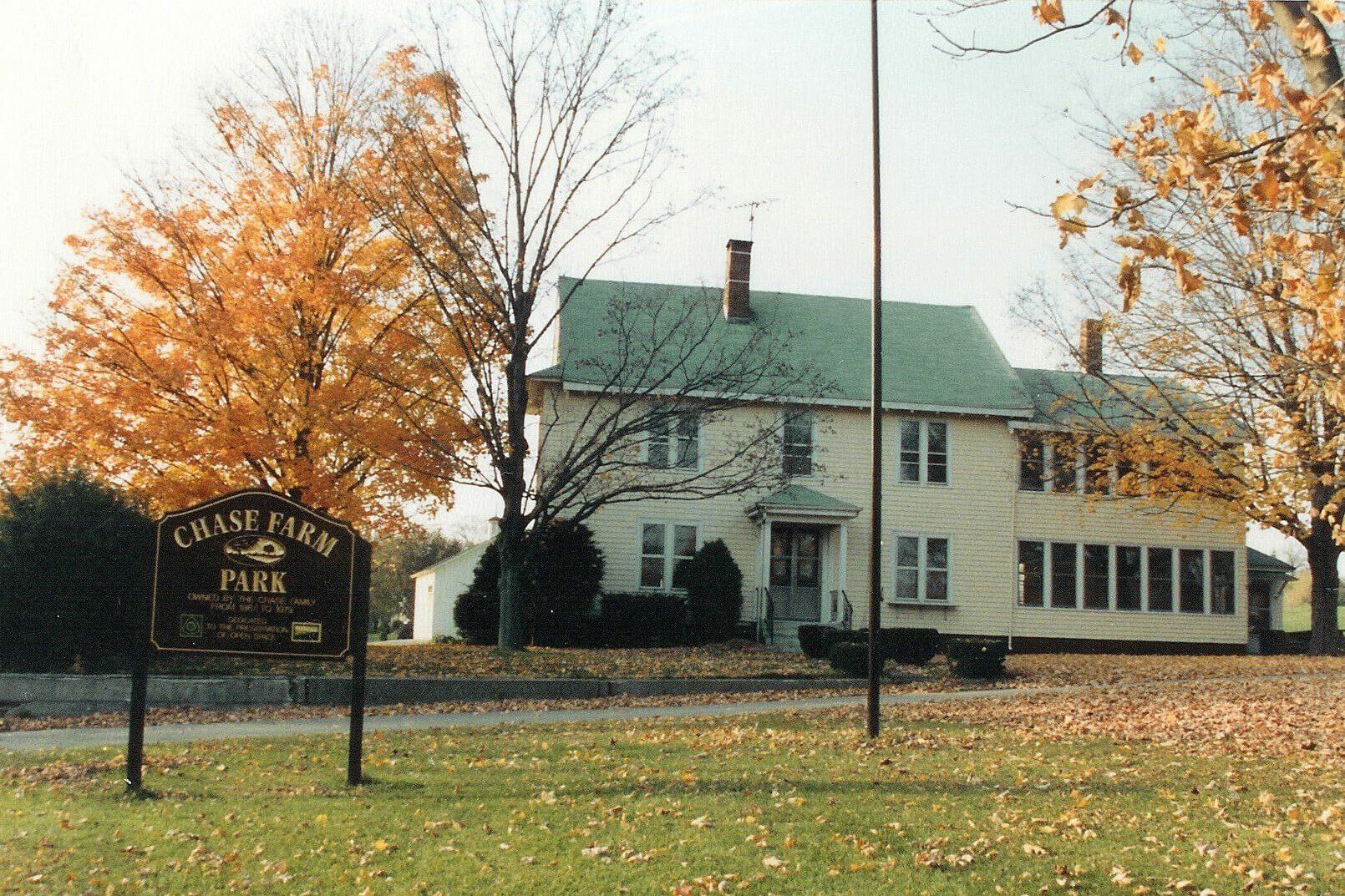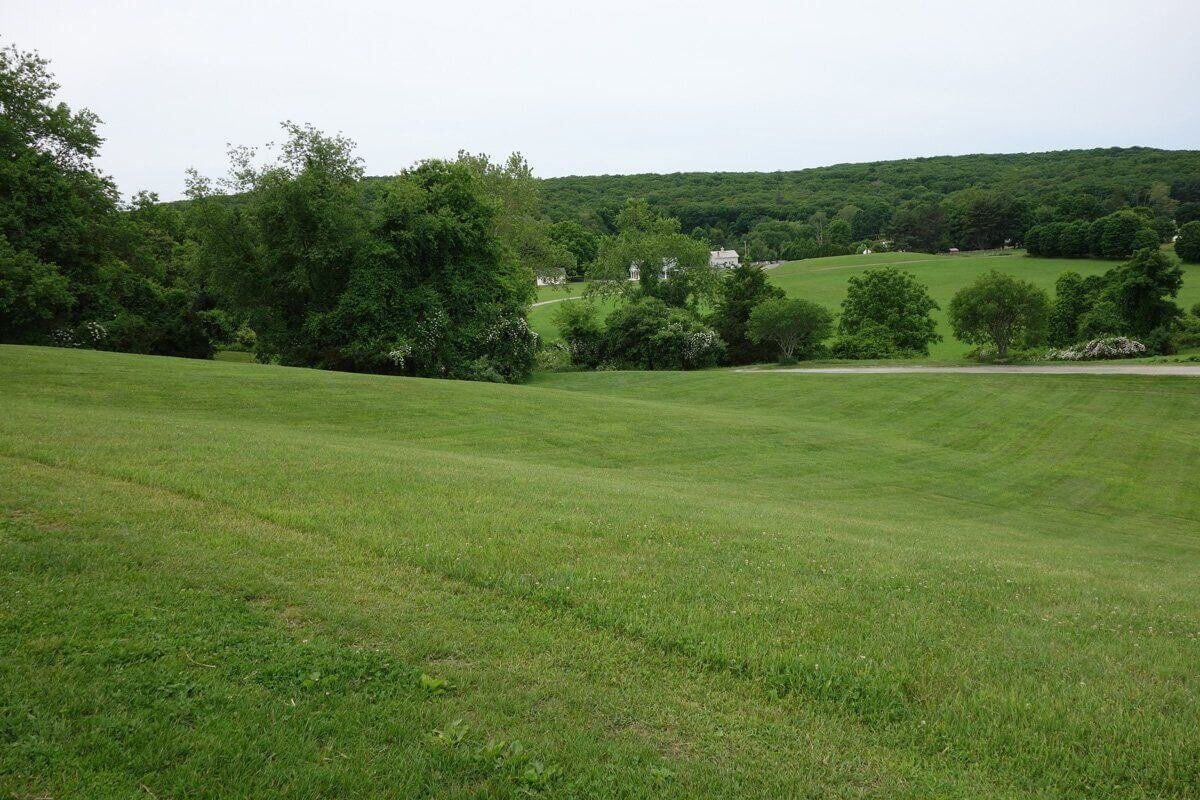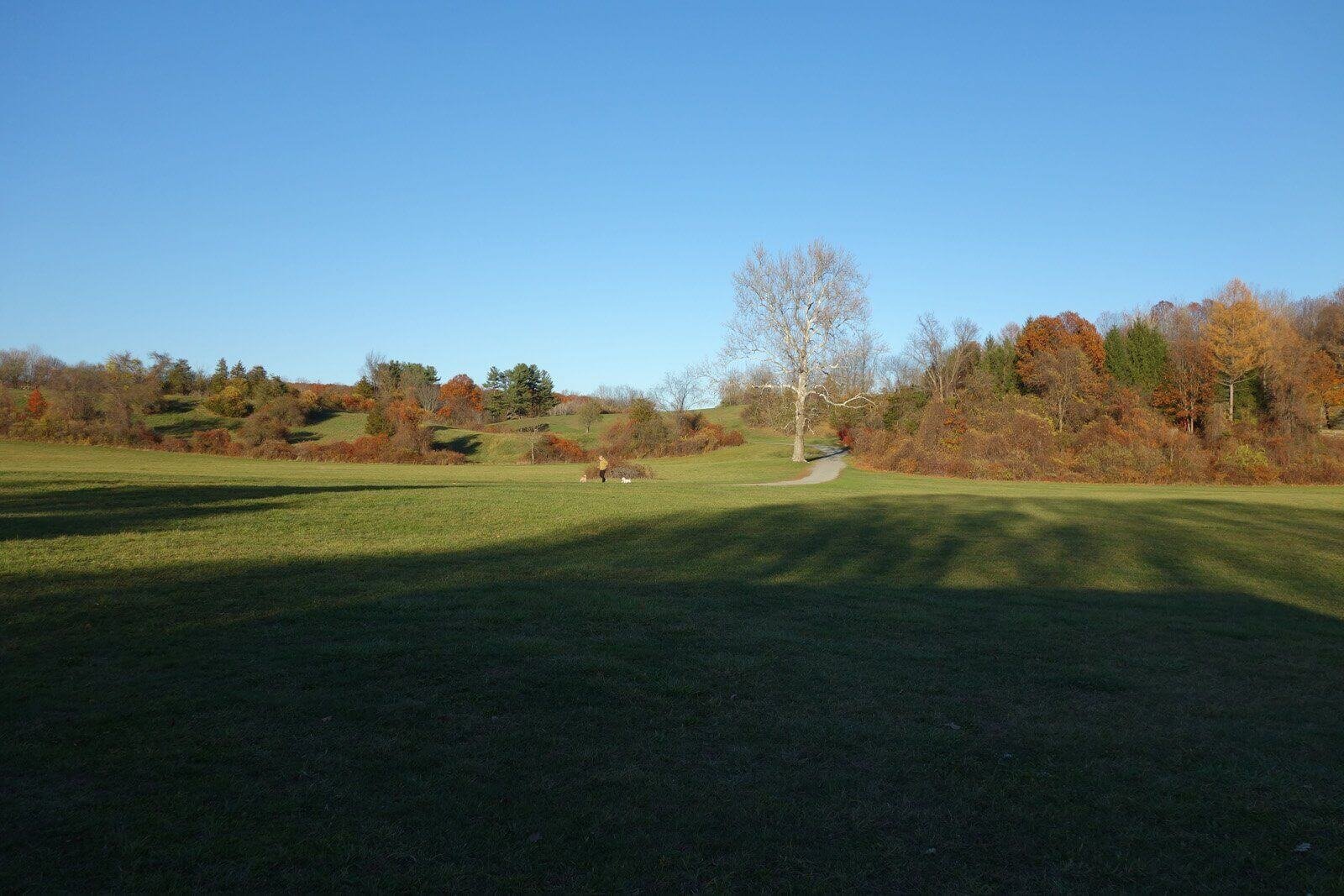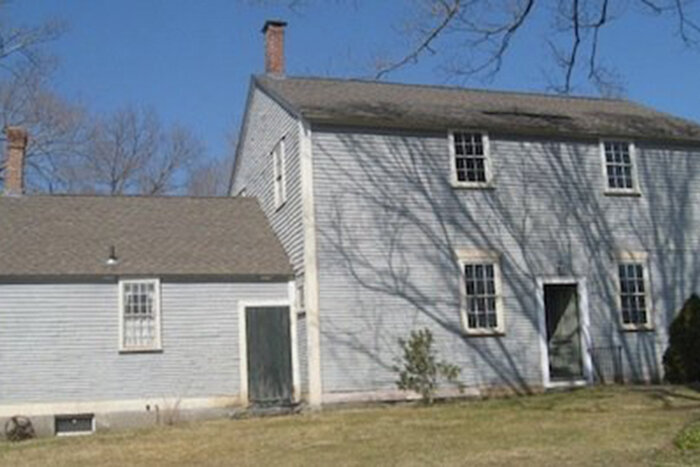The Moshassuck River District
Called "Great" because it was so much more substantial than other routes through the valley, Great Road was built in 1683 as the major thoroughfare on the west side of the Blackstone River. With historic houses, farms and mills, the Great Road Historic District in Lincoln, retains much of the Blackstone River Valley's early 19th century rural character.
The Moshassuck River Historic District, a ¼ mile stretch of Great Road along the Moshassuck River, has been placed on the National Register of Historic Places because of the important historical and architectural significance of the sites that still dot the landscape along the historic sites that are included in this section of Great Road.
Considered among one of the most beautifully preserved rural landscapes in the state, the 85-acre town-owned historic Chase Farm Park, a former dairy farm (c.1867), is the backdrop for the collection of historic buildings now known as the Great Road Heritage Campus. These include the Pullen’s Corner Schoolhouse (c.1850), Moffett Mill (c.1812), Hannaway Blacksmith Shop (c.1880), and the Hearthside House Museum (c.1810). Through programming and costumed docents of the Friends of Hearthside, the important stories of the 19th century life that took place in these authentic Great Road sites are all connected to help preserve Lincoln’s earliest history.
Learn more about the individual sites below.
Visit Us!
Step into history by seeing it firsthand and all it has to offer.
Hearthside House (1810)
The jewel of Great Road is the magnificent stone mansion, Hearthside (c.1810). It is here where the stories begin of what life was like in the earliest years of this community.
Docents in period attire bring history to life with their stories of the families who called Hearthside home, in addition to interpreting the various changing exhibits throughout the year. A shuttle van transports visitors from Hearthside to the other sites of the Campus during many of the tours and programs.
Hannaway Blacksmith Shop (1880)
At the gateway to Chase Farm Park sits the Hannaway Blacksmith Shop. The original shop, begun in 1880, was donated by Hannaway’s family to the Town of Lincoln and moved to this site in 1989.
Today, the traditions of turn-of-the-century blacksmithing have returned, with many of the original tools used by Hannaway on display. The shop is opened on Sunday mornings year round for classes in hand forging as well as for school trips and special programs at the Campus.
Pullen’s Corner Schoolhouse (1850)
This one-room schoolhouse has opened once again, nearly a hundred years after hosting the last class of children from nearby farms during the mid-19th to early 20th century.
Affectionally known as “Hot Potato School” because the teacher cooked potatoes on the school’s stove for her students to enjoy a hot lunch, this school and all the other one room schoolhouses closed in 1922 when Lincoln Community School opened.
The Pullen’s Corner School was originally located in the northwestern section of town and relocated to Chase Farm Park in 2016, carefully restored, and re-opened in 2018 to visitors and school groups.
Moffett Mill (1812)
This rare survivor of the early industrialization of the Blackstone Valley was originally built by George Olney in 1812 and later changed hands when Arnold Moffett, Jr. purchased it in 1850. This machine shop produced wagons, carriages, wooden boxes, shoe laces, along with various tools and parts needed by local farmers.
By the turn of the century, the Mill closed and was left virtually the way it was during its last day of business. A visit to the Mill is like seeing the inside of a time capsule, with many of the original contents still in place. The Mill is only accessible by shuttle van on dates when Hearthside is open for tours.
Chase Farm Park
Over 80 acres of picturesque hills and meadows depict the rural and open character of the Great Road Historic District. Originally a dairy farm that operated from 1867-1965, Chase Farm was Lincoln’s last operating dairy farm and is now enjoyed for a wide range of recreational uses, historical reenactments and various activities connected with the heritage of the town. The park features a pond and a butterfly garden, adding to an ideal location for the study of the environment, science or interpretation for arts or literature. Other activities include summer concerts, winter sledding, picnics, photography, and a most peaceful spot to enjoy a walk.
A new Visitors’ Center, constructed around the remains of the Chase Farm dairy building, offers a picnic pavilion, meeting room, and restrooms for the benefit of visitors to the Park.
The two-story Chase Farm House (c. 1890) was originally the home to three generations of the Chase family, until its’ purchase by the Town in 1987. In 2015, the house was restored and has now returned to its original use as a private residence, thanks to an arrangement with Preserve Rhode Island and the Town of Lincoln. It is not open to the public.
Nearby Historic Sites along Great Road
Arnold House (1693)
In 1693, Eleazer Arnold, a major landowner, built his house along Great Road, one of the earliest roads in the colonies. Two stories high, the home so dominated the modest dwellings of nearby farmers that it earned the title "Eleazer's Splendid Mansion." With its massive chimney end wall, the house is a rare survivor of a once-common Rhode Island building type known as a stone-ender. Located at 487 Great Road and managed by Historic New England. Open weekends from June to October.
Saylesville Meeting House (1703)
One of the oldest continuously-used Quaker meeting houses in New England and the first house of worship erected in Northern Rhode Island. See the original stepping stone used for dismounting off a horse as well as the historic cemetery behind the meeting house where Hearthside's builder, Stephen Hopkins Smith is buried. Located at 374 Great Road. Open Sunday mornings for worship and for public viewing on the third Saturday morning each month.
Lincoln Woods State Park (1908)
It was at Hearthside that the vote was taken by the Metropolitan Park System on Feb. 12, 1908 to purchase Quinsnicket Park as Rhode Island’s first state park. The decision to name it after Abraham Lincoln came about since the meeting was held on his birthday. Today, this 458 acre park located off Great Road is a great place to enjoy many different kinds of outdoor activities offered by the RI Department of Environmental Management, including swimming, picnicking, walking, paddling, rock climbing, and biking.
North Gate (1807)
An original toll house along Louisquisset Pike, which had been built to take traffic off Great Road, is the home to the Blackstone Valley Historical Society. The Arnold Bakery building (1874) was relocated to the site as well. It is open for meetings and programs sponsored by the Society. Located at 1873 Old Louisquisset Pike.
Valentine Whitman Jr. House (1694)
Another classic stone-ender, the Valentine Whitman House is the second oldest house in town. Before Lincoln became a town in 1871, it was part of Smithfield. The Whitman House is the site of the first town meeting in Smithfield.
The Whitmans were among the first settlers in Northern Rhode Island. The house is located at 1147 Great Road at the corner of Whalen Drive. In 2019, the Town of Lincoln sold the house to Preserve Rhode Island for a total restoration. The house is not open to the public.
Kelly House (1835)
Located along the Blackstone River on the Bike Path in Quinville, this small museum presents the stories of the beginnings of the Blackstone Canal and transportation in the early 19th century. Stephen Hopkins Smith, who built Hearthside, was a Commissioner of the Blackstone Canal and was integral in its development. Owned and operated by RI State Parks. Open daily April-October.
